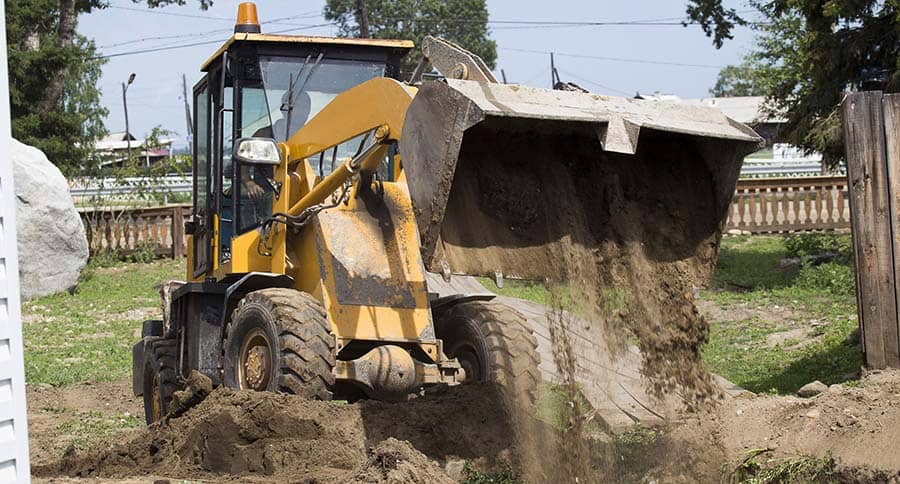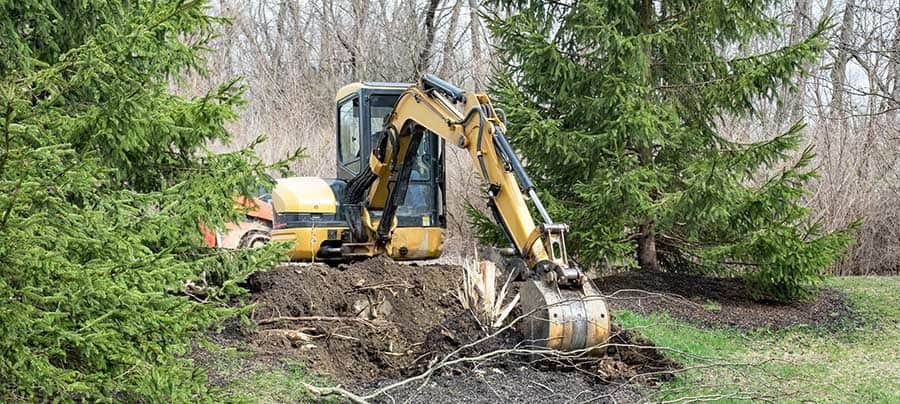Backfilling a hole is essential to prevent it from sinking inward. Using loose soil that you removed from the hole will cause a sinkhole, as will topping it off with sand. Clay seems like the logical solution, but you might be surprised to realize that there are quite a few problems associated with backfilling and clay.
You can backfill with clay if you’re not planting any crops in the area. Clay has poor drainage, which floods plants and prevents them from getting the proper nutrition from the soil. Don’t use clay if you live in a place where it dips below freezing. It could cause the clay to expand and crack.
Throughout this article, you’ll also learn the following info about backfilling with clay:
- Whether or not you should use it where you live
- How to backfill with clay efficiently
- Alternative solutions for backfilling with other types of soil
Should You Use Clay to Backfill?

Are you thinking about filing a dig site with clay? It’s a top consideration for many landscapers, but you should know the advantages and disadvantages before you get started. After all, clay can cause some severe problems, if you use it during the wrong occasions.
Below, you’ll find the pros and cons of using clay to backfill.
Pros of Backfilling With Clay
- Clay is dense, so it won’t cave or sink. Pro Builder mentions that it makes for an excellent foundation for large structures because the weight won’t push it down into the ground. Soft soils, such as mud or sand, tend to give way, causing structures to move around over time.
- The heavyweight nature of clay prevents it from moving around. When you pour clay into a hole, it sticks wherever you place it. While it might need a bit of compacting, clay isn’t prone to shifting or moving around. Not only is it good for the reasons mentioned above, but it’s also much more reliable than others.
- It’s an inexpensive way to backfill. If you already have clay pulled from the ground, then it’s free. Even if you have to buy more clay, you’re bound to save money compared to buying loads of gravel and other rocks. Clay is present all over the western portion of the USA and many other parts of the world.
Cons of Backfilling With Clay
- Clay can crack if it’s frozen and thawed. Cold clay isn’t a problem, and neither is warm clay. But when it starts to freeze, it can crack and tighten up quite a bit. When the temperature rises, the clay starts to expand. This expansion is the only time when clay moves, but it can be terrible for foundations.
- You can’t plant anything in or around clay soil. Since clay has some of the worst filtrations in the world, water doesn’t get to the roots of local plants. Not only that, but roots have a hard time pushing through the dense soil. Clay continues to prove difficult for gardeners and farmers to work around.
- It’s much harder to work with than most other types of soil. Since clay is dense and hard, it’s not very malleable. As it gets colder, the hard surface of clay tends to make it nearly impossible to form. Fortunately, this problem isn’t too apparent once the clay is already pushed into the backfill location.
How to Backfill With Clay
As mentioned by the Garage Journal community, sand and concrete are much more commonly used than clay. However, that doesn’t mean clay isn’t a viable option if you have mass quantities ready to go.
Backfilling applies to anything that refills a hole that was dug. You could use the same material that you removed, though it’s not always the best option. Before you start backfilling with clay, make sure that you know the ramifications of using it for constructions and gardening.
Backfilling with clay is pretty straightforward:
- Start by bringing all of the clay to a designated area. Make sure you know where your source pile is coming from so you don’t end up running all over the place. Consider storing the clay in a wheelbarrow so you can move it around easily. Regardless of your method, it needs to be placed near the hole.
- Slowly push the clay into the hole with shovels, an excavator, or bulldozer. When you have everything ready to go, use one of these tools to push the clay into the hole, but make sure you’re able to get a good look at it the whole time. Too much clay at once will cause air gaps and unlevel soil.
- Occasionally compact the clay with a shovel or another tool. Don’t fill the entire hole without compacting it every now and then. If you throw it all in at once, you’ll either get the aforementioned air gaps or it’ll start to sink once it’s topped off. Have someone press down the clay every few inches.
- Continue the process until the clay is a couple of inches below surface level, then top it off with dirt. Once you have everything layered up to about two or three inches below surface level, it’s time to add dirt and/or fertilizer. Most environments don’t have clay on top, so it might look a bit out of place if you don’t use dirt.
What Should You Use Instead of Clay?
Now that you know how to backfill with clay, you might be wondering if there are any alternatives. After all, you’ve read the downsides associated with it when it’s freezing or you’re trying to garden.
Consider Using Sand or Concrete
Sand is an excellent choice if you want something that isn’t going to add a lot of weight. Make sure you add water to make the sand a bit more dense while you’re pouring it into the whole. Likewise, concrete is a top choice for landscapers and construction workers around the world. Both options provide long-lasting results.
Fill the Area With Dirt and Wood Chips
Dirt is another common option since you already have it from the hole. If you dug through dirt, then you have a bunch of it at your disposal. If you removed a tree stump, then you can grind it down and use the wood chips. Toss in the chips, compact them down into the ground, and top it off with dirt to make it level.

There are plenty of other options, but clay, wood chips, dirt, sand, and concrete are the most popular. Find out what type of soil you need and start backfilling.
Conclusion
Clay can be used to backfill, but only in some situations. If you’re ready to use clay, then it’s important to know that it shouldn’t be used for gardening or in freezing locations. Other than that, it’s a fantastic solution for backfilling.
Here’s a breakdown of the post:
- Clay is dense and heavy, making it an excellent choice for backfilling solid ground.
- Frozen clay can crack and expand, moving the ground above it.
- There’s no filtration through clay, which means it can be harmful to plants.
- Backfilling alternatives to clay include sand, concrete, dirt, and woodchips.
- Always top off clay with dirt or sand for a natural appearance.

